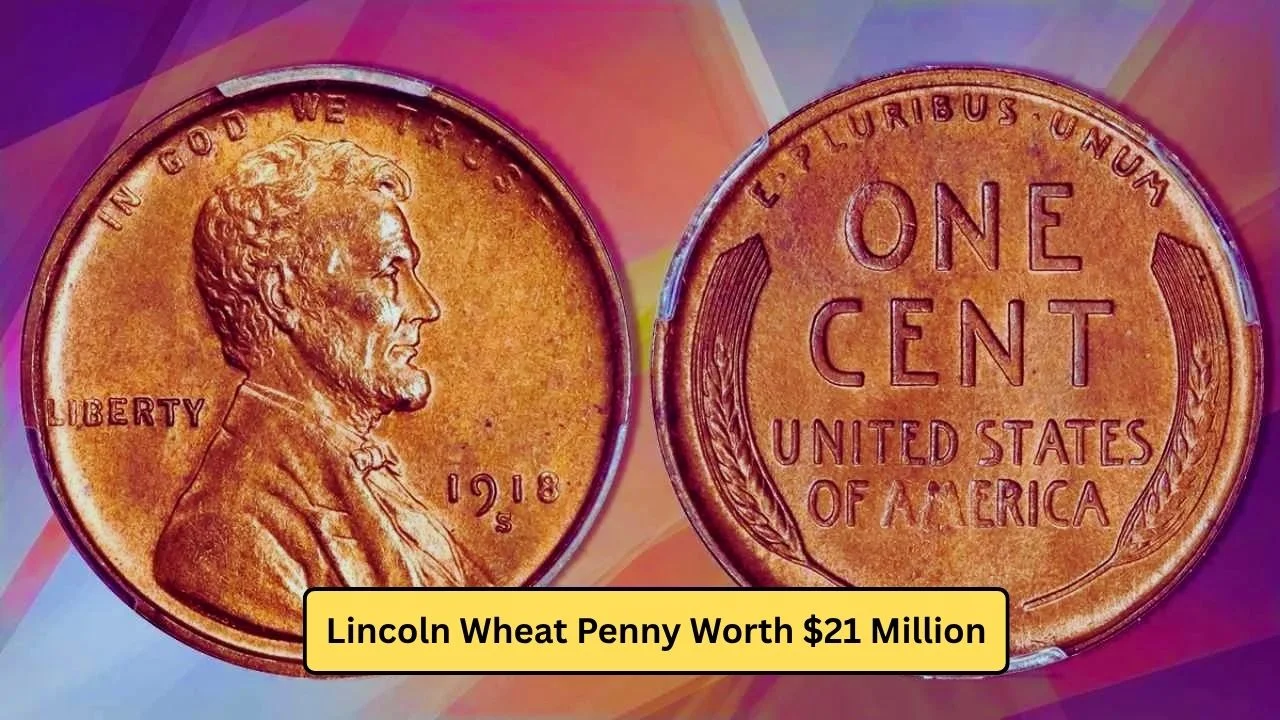Imagine picking up a penny from your change jar and discovering it’s worth $21 million. Sounds like a dream, right? The Lincoln Wheat Penny, a humble coin minted from 1909 to 1958, has sparked treasure-hunting fever among collectors and everyday folks alike.
One rare version, the 1943 bronze penny, is rumored to be worth millions due to a wartime minting error. Could this legendary coin still be hiding in your pocket? In this post, we’ll dive into the history, value, and thrill of the Lincoln Wheat Penny, plus share tips on how to spot a fortune in your spare change.
What Is the Lincoln Wheat Penny?
The Lincoln Wheat Penny, also known as the Wheat Cent, is a one-cent coin minted by the U.S. Mint from 1909 to 1958. It features Abraham Lincoln’s profile on the obverse (front) and two wheat stalks on the reverse (back), symbolizing prosperity.
Designed by Victor David Brenner, it was the first U.S. coin to feature a real person’s likeness, making it a numismatic icon. While most Wheat Pennies are worth just a few cents, rare variants like the 1943 bronze penny have sold for jaw-dropping sums, fueling dreams of finding a fortune in loose change.
The History of the Lincoln Wheat Penny
Introduced in 1909 to celebrate Abraham Lincoln’s 100th birthday, the Lincoln Wheat Penny marked a shift in American coinage. Before this, coins typically featured symbolic figures like Lady Liberty. Brenner’s design, with Lincoln’s portrait and wheat stalks, became a cultural staple, circulating through the Great Depression, World War II, and beyond.
In 1943, due to copper shortages during WWII, the U.S. Mint switched to zinc-coated steel pennies. However, a few bronze planchets from 1942 were accidentally used, creating the ultra-rare 1943 bronze penny—a collector’s holy grail.
Why Is the 1943 Bronze Penny So Valuable?
The 1943 bronze penny’s value stems from its rarity, historical context, and collector demand. During WWII, copper was reserved for military use, so pennies were made of steel. Only a handful of bronze pennies—estimated at 10 to 20—were mistakenly minted, making them one of the rarest U.S. coins.
In 2010, a 1943 bronze penny sold for $1.7 million at auction, and experts speculate a pristine specimen could fetch $21 million today due to its scarcity and allure. Its wartime backstory adds to its mystique, captivating numismatists worldwide.
| Factor | Why It Drives Value |
|---|---|
| Rarity | Fewer than 20 known 1943 bronze pennies exist. |
| Historical Significance | Minted during WWII copper shortages, a unique error. |
| Condition | Uncirculated coins fetch higher prices. |
| Collector Demand | High competition among numismatists. |
How to Spot a Valuable Lincoln Wheat Penny
Think you’ve got a $21 million penny? Here’s how to check:
- Check the Date: Look for 1943 pennies. Most are steel, but a bronze one is the prize.
- Magnet Test: Bronze pennies don’t stick to magnets; steel ones do.
- Weight: Bronze pennies weigh ~3.11 grams; steel ones are ~2.7 grams.
- Mint Mark: Check for “D” (Denver) or “S” (San Francisco) under the date.
- Condition: Sharp details and minimal wear increase value.
If you suspect you’ve found a rare coin, don’t clean it—cleaning can ruin its value. Store it in a protective holder and seek professional authentication from services like PCGS or NGC.
Notable Lincoln Wheat Penny Records
The Lincoln Wheat Penny has made headlines with staggering auction prices. Here are some highlights:
| Year | Variant | Sale Price | Year Sold |
|---|---|---|---|
| 1943 | Bronze Penny | $1.7 million | 2010 |
| 1909-S | VDB Penny | $168,000 | 2022 |
| 1955 | Double Die | $114,000 | 2018 |
| 1944 | Steel Penny | $373,750 | 2008 |
These sales show the incredible potential of rare Wheat Pennies, with the 1943 bronze penny leading the pack. Stories of finds, like a 1943 bronze penny discovered in a teenager’s change in 1947, keep the treasure hunt alive.
Expert Tips for Coin Collectors
- Start Small: Begin collecting common Wheat Pennies to learn about grading and condition.
- Use a Magnifying Glass: Spot errors like doubled lettering or missing mint marks.
- Join Coin Clubs: Connect with local or online numismatic communities for tips and resources.
- Authenticate Finds: Always verify rare coins with professional graders to avoid counterfeits.
- Store Properly: Use coin holders to preserve condition and value.
Frequently Asked Questions (FAQs)
Q: Is the $21 million Lincoln Wheat Penny real?
A: While no 1943 bronze penny has sold for $21 million, experts estimate a pristine specimen could reach this value due to rarity and demand. The highest recorded sale was $1.7 million in 2010.
Q: Can I still find a 1943 bronze penny in circulation?
A: It’s unlikely but possible. Rare coins have been found in change, jars, or family collections. Check your pennies
Q: How do I know if my penny is bronze?
A: Use a magnet—bronze pennies won’t stick. Weigh it (3.11 grams) and look for a reddish-brown color.
Q: What other Wheat Pennies are valuable?
A: Look for 1909-S VDB, 1914-D, and 1955 Double Die pennies, which can fetch thousands.
Conclusion
The Lincoln Wheat Penny is more than pocket change—it’s a piece of American history with the potential to change your life. The legendary 1943 bronze penny, valued at up to $21 million, embodies the thrill of coin collecting.
Whether you’re a seasoned numismatist or a curious beginner, checking your change could uncover a hidden gem. So, grab a magnifying glass, inspect those pennies, and join the treasure hunt. Share this post with fellow collectors, and let us know in the comments if you’ve ever found a rare coin!

